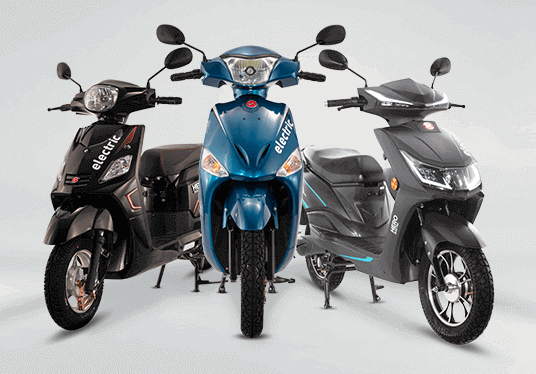To tackle the surging fuel prices and increasing pollution, today, the world relies on electric vehicles as a cleaner mode of transportation. The push towards electric is the result of the combined efforts of governments and automobile leaders.
According to the International Energy Agency, the total number of EVs will reach up to 145 million by 2030, a decent target compared to our current situation. If we look back at the EV sales in FY 2019 globally, the total number of electric vehicles sold was 4.79 million,almost 22 times those sold in 2013.
What do these figures indicate? Why is every other nation going electric?
Sustainability being one of its purposes, the EV uptake is rising primarily because of affordable, greener, electric mobility solutions. EVs are cheaper to run and maintain because they have fewer movable parts as they run on batteries, making them easier to repair and upgrade. The cost of charging an electric vehicle is roughly 40% less than the cost of driving a similar-sized automobile over the same distance using gasoline.
Unlike fuel-consuming vehicles, EVs save us a lot of energy. For instance, if you drive electric scooter 60 kilometers a day for ten years, you will save enough energy to plant 30-34 full-grown trees. Another reason for going electric is the concern for the environment. However, we can’t also question that electric scooters are here to stay because of advanced, affordable mobility solutions.
Let us see how electric vehicles in general and e-bikes in particular have evolved and grown to become the futuristic mobility solutions that they are deemed to be today, over the years.
The birth and rebirth of Electric Vehicles
Today, EVs are the hot topic of the future of mobility. And though the surge has been happening since the last decade, electric vehicles have been here for a longer time.
Electric vehicles date back to the 1800s. Anyos Istvan Jedlik designed a prototype of the electric car in 1828; however, it was an American Inventor, Scotsman Robert Anderson, who developed the first working electric car in the 1830s.
William Morrison created the first electric automobile in the United States in 1891. His six-passenger wagon topped out at 14 miles per hour. And it was Morrison’s invention that boosted interest in electric vehicles.
Unlike their steam or gasoline competitors, the vehicles were known for their smooth, quiet rides and easy-to-control setup. Because early gasoline cars required many switches to shift gears, which was dangerous and exhausting, people started opting for electric vehicles, leading to their popularity and demand.
It was the same period when hybrid versions of EVs were released. As EVs gained popularity in the United States in the 1900s, the total EVs comprised 33% of the automobile industry. However, it was also the time when its popularity began to decline.
Because, at that time, EVs failed to cover long-distance and were less advanced, the liking for motor cars increased. Roads and transportation became better, and because of slower speed and range, fuel cars took over EVs.
But later in the early 1960s and 1970s, the need for electric vehicles started increasing slowly because of increasing fuel prices and environmental concerns. However, it was not until the 1990s when the EVs finally got a noticeable push.
The EV Revolution Today
In today’s era riddled with issues of global warming and emphasis on cutting carbon emissions, the increased production and uptake of EVs looks inevitable.
According to a Mckinsey study, the EV industry will explode by 2030, with the US seeing a 32% increase in its sales, China from 7% to 34%, and Europe will see a 5 to 6 times increase in its sales. And in the case of India, we can expect 30% of vehicles to be electric by 2030.
EVs today have penetrated the automobile industry and come in two-wheelers, three-wheelers, and four-wheelers. There are many prime electric leaders in the industry, setting the pace for the EV evolution.
Today’s EVs are more advanced than their previous versions. The price of batteries is reducing every year, which has also made them more accessible and in-demand.
Additionally, some vital drivers like conducive government policies and incentives and infrastructural development have further ramped up EV production and penetration in the last decade. And hopefully, we will continue to see EVs evolve for affordable mobility in the future.



